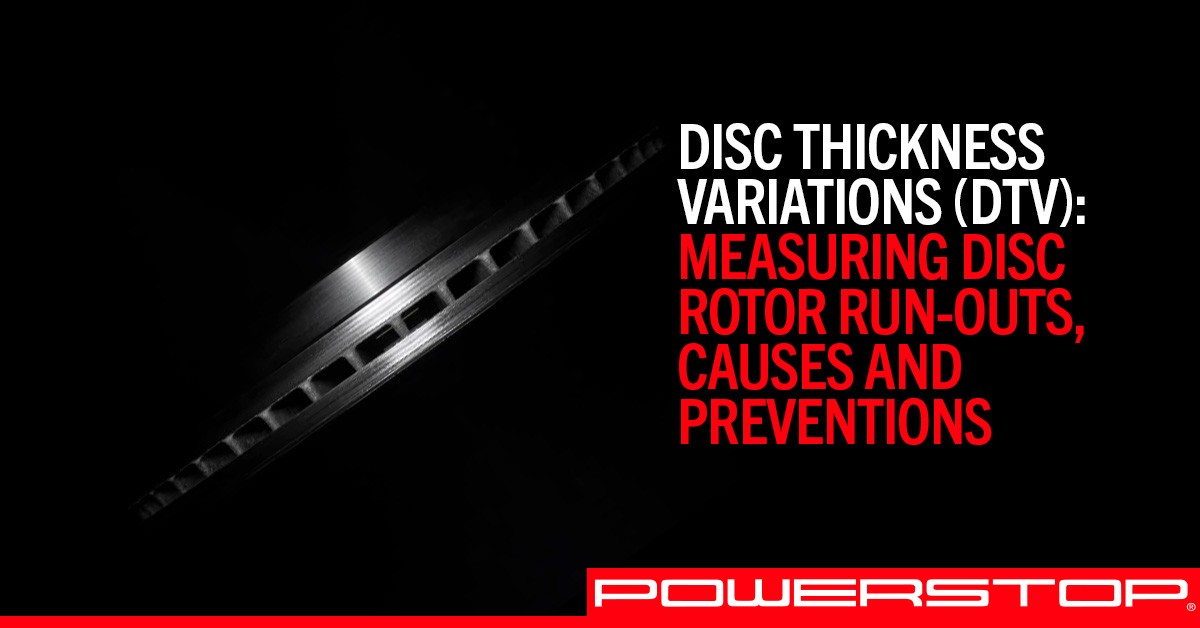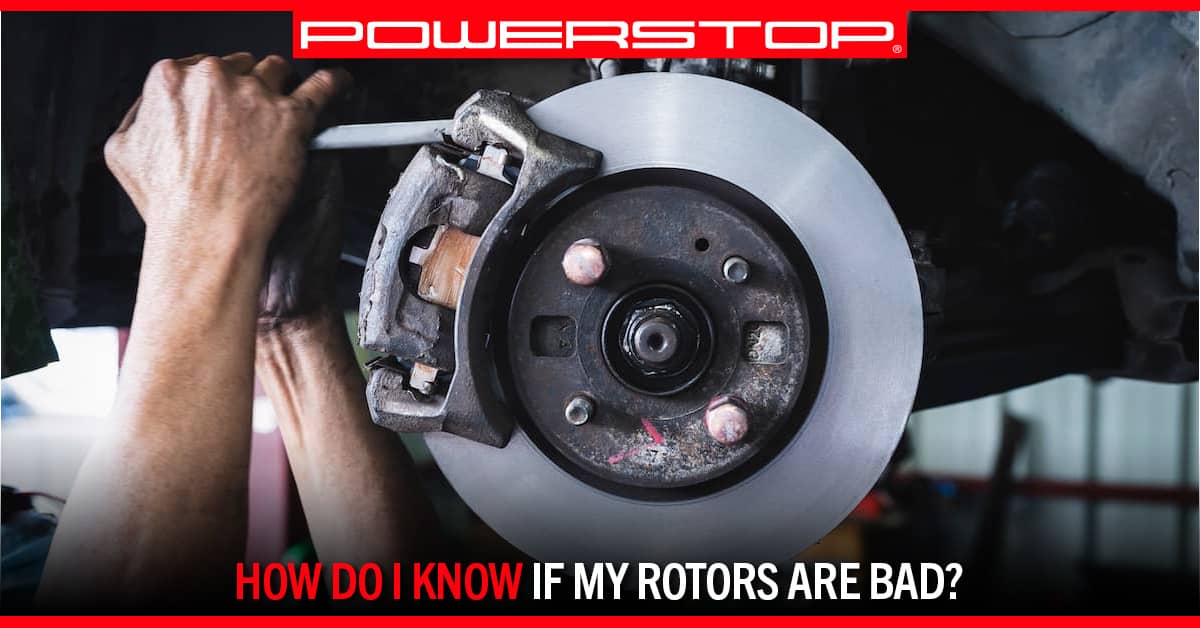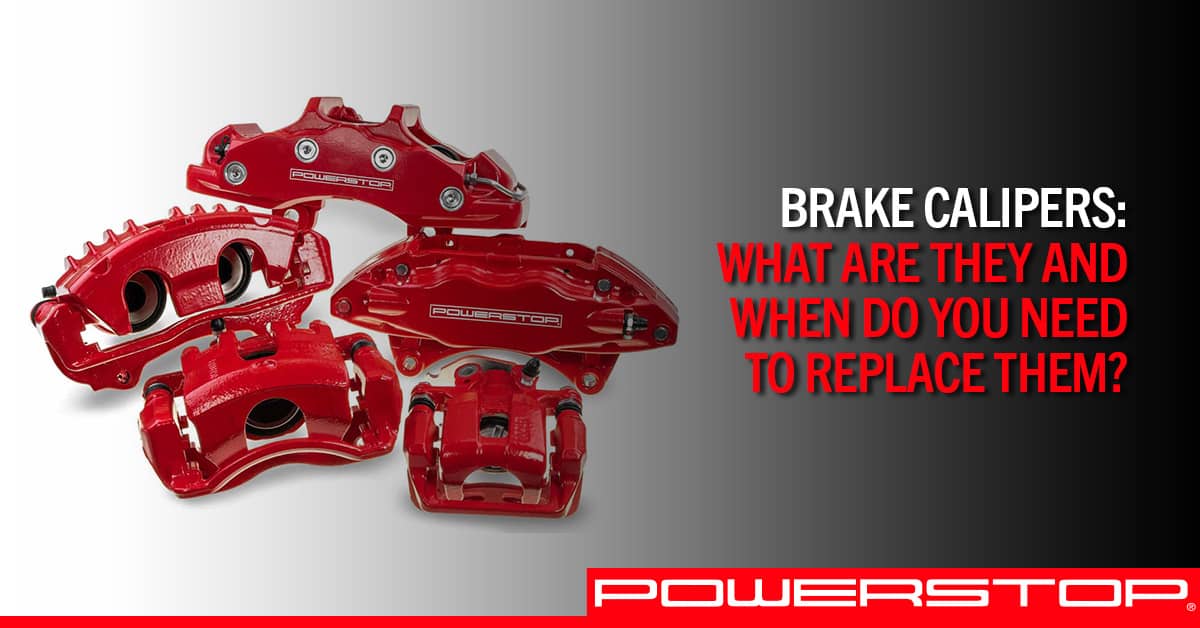
Disc Thickness Variations (DTV): Measuring Disc Rotor Run-Outs, Causes and Preventions
If your brake pedal feels like it’s pulsing or vibrating, you might have brake disc thickness variation (DTV), a small variation in the thickness of the friction surface of the brake rotor(s) usually caused by the rotors wearing unevenly.
What Is Disc Thickness Variation (DTV)?
Brake disc thickness variation is the variation between the thickest and the thinnest parts of the rotor as it rotates on the axle. This is a rotor condition where part of the rotor surfaces is thicker than the other. When rotor thickness varies, brake pads can oscillate back and forth, causing the brake pedal to pulse.
This brake pad oscillation can also lead to brake torque variations as the brake pads grasp and release over the higher area of rotor thickness. You would generally notice this phenomenon in the steering wheel as the brake torque is out of sequence and differs from the left and right axles.
Deposits of material on the brake pads can sometimes be mistaken for DTV. The key differences are:
- Material deposits are typically characterized by clearly visible material smearing on the friction surface of the pad. Vibrations increase with temperature. Both issues may cause steering wheel vibration.
- Pulsing pedals are generally associated with DTV.
Damaged or worn suspension bushes can also cause similar vibrations as DTV, as the loose suspension assembly oscillates back and forth during braking.
What Causes Disc Thickness Variation?
Disc Thickness Variation can occur for a number of reasons. Typically, DTV results from:
- The force of uneven clamping and rotating
- Rotors not installed correctly
- Improperly positioned brake calipers
- Irregular brake friction patterns
- Rust and dirt deposits
How To Identify Disc Thickness Variation
When one area of the rotor is thicker than another area, it causes specific effects that you may notice, such as:
- Pedal pulsation: This occurs when the rotor rotates through the brake pads and calipers (more noticeable with heavy brakes).
- Steering wheel oscillation: The steering wheel feels like it’s pulsing or vibrating.
- Vibrations: The thin and thick sections of the rotor slip in between brake pads.
How To Prevent DTV
In addition to causing troublesome vibrations, disc thickness variation can be dangerous and should be addressed immediately. One of the best ways to avoid the dangers of DTV is to take precautionary steps to prevent it from occurring in the first place. Ways that you can help to prevent DTV include:
- Proper installation: Install your brake system properly, especially brake rotors, pads, and calipers.
- Clean surfaces: Clean the wheels and rotors thoroughly.
- Ensure torque: Use a wrench to tighten the lug nuts to ensure lug nut torque to the manufacturer’s specifications.
- Break in your brakes: Always follow the break-in procedure correctly.
*Note: disc resurfacing may be required to correct the disc thickness variations, run-outs, and scorings.
How To Measure Rotor Thickness
To measure rotor thickness, follow these steps:
- Measure at least 6 areas of the rotor’s face.
- Use a micrometer to measure the thickness of the rotor.
- The measurements should not vary larger than .001 inch (0.025 mm).
- Start measuring a quarter inch from the edge of the rotor.
- Variations in thickness larger than .006 inch (0.15mm) is an indication of DTV and might need replacement.
What Is Lateral Runout?
Unlike DTV, Lateral Runout (LRO) refers to situations where a rotor’s thickness stays the same but the rotor plates are wobbly or move from side to side. As lateral runout becomes excessive, it causes pad and rotor wear. Lateral runout typically feels like a dynamic imbalance problem in either the brake pedal or the steering wheel.
How To Fix Lateral Runouts
Depending on the circumstances involved with the runout, consider the following:
- The rotors can be re-surfaced to the same as other rotor surfaces. However, it may be more expensive to have a shop resurface a rotor than it would be to just buy a new one.
- Shimming the rotors will change the run-outs in the rotor.
Typical Run-Out Value
Most of the rotors in the market today range between 0.0005 to 0.001 inches.
| Vehicle | Run-out value |
| Small Cars | .01mm (0.0003 in) |
| Medium Cars | .08mm (0.03 in) |
| Luxury Cars | .50mm (0.019 in) |
Have a Question? PowerStop Can Help
PowerStop is dedicated to delivering top-quality performance brakes for every vehicle on the road. If you have a question about any of our products, contact us today online or toll-free at (888) 863-4415. Our customer service team is available to answer your questions Monday through Friday from 8 a.m. to 5 p.m. (CST). Se habla español.
Back



